Click on images to enlarge
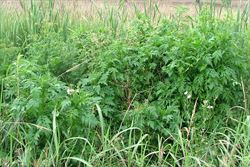
infestation (Photo: Sheldon Navie)
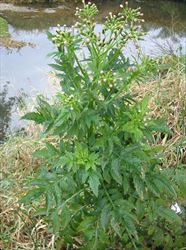
habit (Photo: Sheldon Navie)
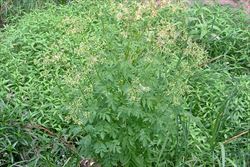
habit (Photo: Sheldon Navie)

rosette of lower leaves (Photo: Sheldon Navie)
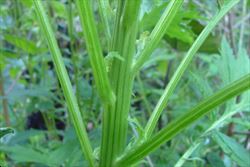
ribbed stem (Photo: Sheldon Navie)

close-up of deeply-lobed leaf with toothed margins (Photo: Sheldon Navie)
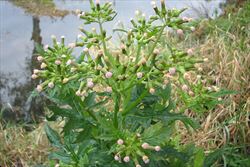
upper leaves and clusters of flower-heads (Photo: Sheldon Navie)

close-up of young flower-heads (Photo: Sheldon Navie)

close-up of flower-heads (Photo: Sheldon Navie)
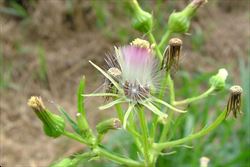
close-up of immature fruit (Photo: Sheldon Navie)
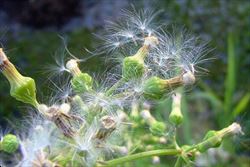
close-up of old flower-heads and seeds (Photo: Sheldon Navie)

young plant (Photo: Sheldon Navie)
Scientific Name
Erechtites valerianifolius (Link ex Spreng.) DC.
Synonyms
Erechtites valerianifolia (Wolf) DC.Senecio valerianifolia WolfSenecio valerianifolius Link ex Spreng.
Family
Asteraceae (Queensland, New South Wales, the ACT, Victoria, Tasmania, Western Australia and the Northern Territory)Compositae (South Australia)
Common Names
Brazilian fireweed, burnweed, Ceylon thistle, fireweed, fireweed daisy, tropical burnweed
Origin
Native to southern Mexico, Central America (i.e. Costa Rica, El Salvador, Guatemala, Nicaragua and Panama), the Caribbean and South America (i.e. French Guiana, Guyana, Venezuela, Brazil, Bolivia, Colombia, Ecuador, Peru and northern Argentina).
Naturalised Distribution
Widely naturalised in the coastal districts of eastern Australia (i.e. in the coastal districts of Queensland and northern and central New South Wales).
Also naturalised on Norfolk Island and in many other parts of the world (e.g. Papua New Guinea, the Solomon Islands, Tonga, Fiji, Hawaii and New Zealand).
Notes
Brazilian fireweed (Erechtites valerianifolius) is a weed of waterways, pastures, roadsides, gardens, waste areas and disturbed sites in the tropical, sub-tropical and warmer temperate regions of eastern Australia. It is sometimes regarded as a minor environmental weed in Queensland and New South Wales.
This species is becoming increasingly common in waterways and wetlands in south-eastern Queensland (particularly in Brisbane, on the Gold Coast and on the Sunshine Coast) and its impact is probably underestimated. It is regarded as a lower priority environmental weed in Noosa Shire, and is present along waterways of some environmental significance in this region. For example, it is one of several weed species that are increasing in abundance and outcompeting the former native flora in nutrient enriched areas along Burgess Creek in the Girraween region. It is also present along road and powerline corridors within the Wet Tropics World Heritage Area in far northern Queensland. In New South Wales it has been recorded in several wetland conservation areas (e.g. the Warriewood Wetlands, McKay Reserve and Angophora Reserve in northern Sydney and the Belongil Wetlands at Byron Bay) and is a troublesome weed of natural areas in the Gosford region (e.g. in riparian areas along Kincumber Creek).
Brazilian fireweed (Erechtites valerianifolius) is also described as a weed of relatively wet, disturbed areas in Hawaii; a weed of forest clearings, streams, crests and ridges in Fiji; and a weed of landslips and other naturally-disturbed habitats in Papua New Guinea.

